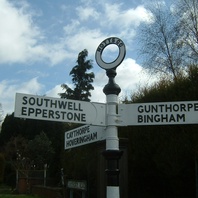
Viking Names
Caythorpe
Caythorpe, in the Thurgarton Wapentake of Nottinghamshire, probably comes from the Old Norse male personal name Káti and the Old Norse element þorp ‘outlying farm, settlement’. There is also a Caythorpe in Lincolnshire.
Read More
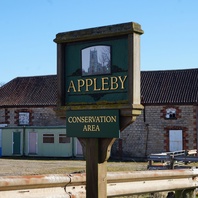
Viking Names
Appleby
Appleby, in the Manley Wapentake of Lincolnshire, is a hybrid name coming from Anglian æppel ‘an apple; fruit, tree-fruit; an apple-tree’ and Old Norse by ‘a farmstead, a village’. It is likely, from the situation of the village that this was formerly Appleton, in which the second element, originally Old English tun ‘a farmstead, village, estate’, was later replaced by by.
Read More

Viking Names
Gunness
Gunness, in the Manley Wapentake of Lincolnshire, is an Old Norse compound from the male personal name Gunni and nes ‘a ness, a headland, a promontory’. The name is topographically appropriate as it is located on a marked promontory on the River Trent. The same personal name also occurs in Gunby and Gunthorpe, Lincolnshire.
Read More

Viking Names
Risby
Risby, in the West Riding of Lindsey in Lincolnshire from Old Norse hrís ‘shrubs, brushwood’ and Old Norse by ‘A farmstead, a village’. This name is found as Rejsby and Risby in Denmark and it is possible that the place-name is transferred from there. If this is the case it was presumably because it is topographically appropriate for the English name as for the Danish. Risby is a joint parish with Roxby.
Read More
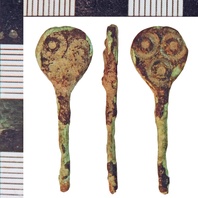
Viking Objects
Ring-and-Dot Pin (NLM-7A2D15)
Copper-alloy cast pin with a flat discoid head, no collar, and stamped decoration on the head, Flixborough type 601. The head bears three large [diameter 4.4mm] ring-and-dot motifs on each of its opposed faces. The tip of the shank is lost. The introduction of flat-headed pins with ring-and-dot decoration, superseding other types, is held by Dave Haldenby to mark the arrival of Viking settlers at Cottam, East Riding of Yorkshire. Suggested date: Early Medieval, 865-925. The finder suggests this to be part of an assemblage amounting to c.5% of material recovered from an extensive site, the rest being removed illicitly without record. Archaeological opinion holds the site to have been of equivalent character to Flixborough, North Lincolnshire, in terms of its material culture. Coins are under-represented in the group.
Read More
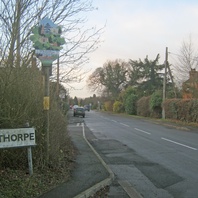
Viking Names
Winthorpe
Winthorpe, in the Newark Wapentake of Nottinghamshire, comes from either the Old English make personal name Wigmund or its Scandinavian equivalent Vígmundr and Old Norse þorp ‘a secondary settlement, a dependent outlying farmstead or hamlet’.
Read More

Viking Names
Brocklesby
Brocklesby, in the Yarborough Wapentake of Lincolnshire, comes from the postulated Old Norse personal name Bróklauss and the Old Norse element bý ‘a farmstead, a village’. The first element is originally a nickname meaning ‘without breeches’ and is likely an Anglo-Scandinavian formation.
Read More

Viking Names
Tupholme
Tupholme, in the Gartree Wapentake of Lincolnshire, comes from the Old Norse male personal name Túpi and Old Norse holmr ‘an island, an inland promontory, raised ground in marsh, a river-meadow’. Alternatively, the first element may represent Middle English tup ‘a ram, a tup’.
Read More
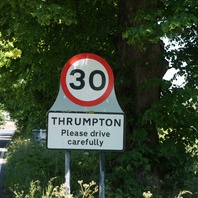
Viking Names
Thrumpton
Thrumpton, in the Rushcliffe Wapentake of Nottinghamshire, comes from the Old Norse male personal name Þórmóðr and the Old English tun ‘farm, settlement’. Thus it is an Anglo-Scandinavian hybrid name. There is a place of the same name, with the same origin, in the Bassetlaw Wapentake.
Read More
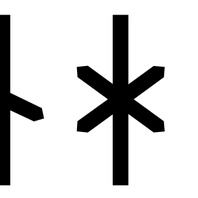
Viking Names
Ragnhild
The female name Ragnhildr is very common throughout the Scandinavian world, including several parts of Britain and Ireland, up to modern times. There is a suggestion that it was restricted to royalty and aristocrats in the Viking Age and then spread to other social groups. It may be the first element of the Lincolnshire place-name Raventhorpe, although in fact the earliest forms suggest the male name Ragnaldr, and more recent publications prefer this interpretation.
Read More

Viking Names
Gudrid
Guðríðr was common in Iceland from the time of settlement (c. 870-930) onwards and is recorded in the quasi-historical Old Norse-Icelandic text Landnámabók ‘The Book of Settlements’ that recounts this period. The name was also common in Norway and is found in a Danish runic inscription and possibly appears in a Swedish place-name. Forms of Guðríðr are attested in medieval Yorkshire charters and documents. The first element of the name is Guð from guð, ‘the gods’ and is combined with the second element -(f)ríðr, related to Gothic frījōn ‘to love’ with the original meaning ‘loved’, later meaning ‘fair’.
